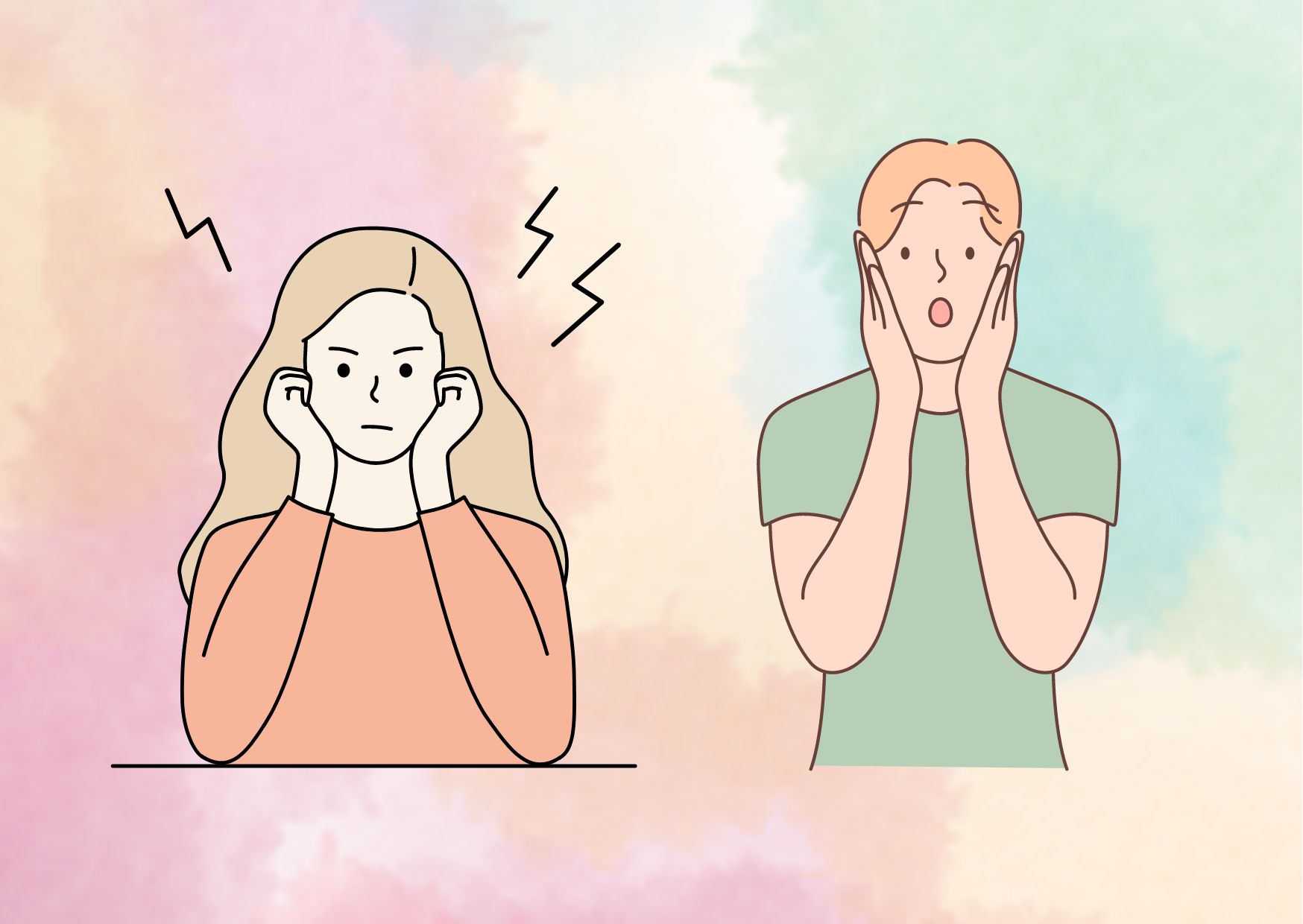10 Strategies to Support Your Partner’s Bad Mood: A Practical Guide
Navigating the turbulent waters of a partner’s bad mood can test the strength and resilience of any relationship. Whether it’s the occasional dissatisfaction or a recurrent pattern where phrases like “my boyfriend is always in a bad mood” or “my wife always in a bad mood” become all too familiar, understanding the dynamics at play and learning how to effectively support your partner without compromising your own emotional wellbeing is crucial. The significance of this skill cannot be overstated, as it not only contributes to the health and happiness of the relationship but also to the personal growth and emotional maturity of both partners.
This article will explore a range of strategies designed to address and mitigate the impact of a partner’s bad mood. From managing one’s own emotions and developing compassion and empathy, to employing effective communication tactics and creating emotional boundaries, the guide aims to provide practical advice for those moments when the question, “how to get someone out of a bad mood,” becomes pertinent. Additionally, it will discuss the importance of self-care during these challenging times and identify signs that may indicate the need for professional help. Whether confronting issues related to “why am I always in a bad mood with my partner” or navigating the complexities of a partner who takes their bad moods out on you, this comprehensive approach offers insights and solutions to help foster a supportive, understanding, and resilient relationship.
Understanding the Impact of Your Partner’s Bad Mood
The impact of a partner’s mood on an individual’s emotional state is a phenomenon known as “emotional contagion.” This refers to the unconscious process of mirroring or adopting the emotions and behaviors of those around us. As social beings, we are inherently attuned to the emotional cues and nonverbal communication of others, which can influence our own moods and reactions.
The Emotional Contagion Effect
Emotional contagion can occur through various channels, including verbal communication, facial expressions, body language, and even environmental factors like music or atmosphere. Research suggests that there may be a neurological basis for this phenomenon, involving the mirror neuron system in the brain. When we observe someone experiencing an emotion, certain neurons in our brain become activated, causing us to unconsciously mirror or mimic that emotional state.
The impact of emotional contagion can be profound, leading to a disoriented sense of self and potential burnout. As we absorb the emotions of others or the environment around us, it can become challenging to remain grounded in our own experiences and perspectives. This can be particularly problematic when the emotions being transmitted are negative, as it can contribute to a cycle of negativity and emotional distress.
Recognizing Your Own Triggers
In the context of a relationship, emotional contagion can be triggered by various factors, including past experiences, trauma, or personal triggers. For example, if an individual has experienced negative or traumatic events in their childhood related to a family member’s mood swings or emotional outbursts, they may be more susceptible to being triggered by their partner’s bad moods.
It is essential to develop self-awareness and identify personal triggers that may exacerbate the impact of a partner’s mood. By recognizing these triggers, individuals can take proactive steps to manage their own emotions and reactions, rather than becoming overwhelmed or consumed by their partner’s emotional state.
Strategies such as practicing mindfulness, setting emotional boundaries, and engaging in self-care activities can help mitigate the effects of emotional contagion and maintain a sense of emotional equilibrium, even in the face of a partner’s challenging moods.
Strategies for Managing Your Own Emotions
When our partners experience intense moods, it can trigger emotional reactions within us, often rooted in past experiences or associations. These reactions can stem from our childhood, where the moods of adults or older siblings may have negatively impacted our well-being. As adults, living with a partner can create a similar environment, and their moods can evoke feelings of fear and powerlessness.
Identifying and Understanding Your Reactions
Recognizing our emotional triggers and reactions is crucial in managing our own emotions during our partner’s bad moods. It’s important to pay attention to our emotions and identify what triggers them. Start by taking a few minutes each day to reflect on the strong emotions you experienced and what caused them. As you gain insight into your emotional patterns, you’ll be better equipped to recognize and understand your reactions in real-time.
One effective technique is to use “I” statements when communicating your emotions to others. Instead of saying “you make me feel angry,” try saying “I feel angry when X happens.” This approach helps you take ownership of your emotions and avoid pointing fingers.
Taking Responsibility for Your Bad Mood
While we cannot control our partner’s mood, we can exert a restraining influence over our own emotional reactions. It’s essential to remember that we are not responsible for our partner’s mood, nor can we control it. However, we can influence the likelihood of improving the situation by responding strategically, rather than indulging our own emotional reactions, which often exacerbates the situation.
Developing healthy coping mechanisms, such as exercise, meditation, or journaling, can help you navigate your emotions and take responsibility for your emotional well-being. Seeking support from trusted friends, family, or mental health professionals when struggling with difficult emotions is also a sign of strength, not weakness.
Ultimately, emotional responsibility empowers us to form clearer and healthier emotional boundaries with others. By defining what we will and will not accept in our relationships and disentangling our well-being from the outcome of those delineations, we can guard ourselves more powerfully and elevate our consciousness through a persistent dedication to self-reflection.
Developing Compassion and Empathy
Cultivating compassion and empathy is a fundamental aspect of supporting a partner through their bad moods. Empathy, as defined by Psychology Today, is “the experience of understanding another person’s condition from their perspective.” This ability to see things from our partner’s point of view is crucial in fostering a deeper connection and mitigating conflicts.
The Importance of Empathy in Relationships
Empathy is a vital emotion that helps us build trusting and meaningful relationships. When we empathize with our partners, we can better understand their thoughts, feelings, and needs. We gain insight into what makes them happy and what hurts them, allowing us to respond in a way that meets their needs rather than simply reacting emotionally.
Research has shown that couples with a high degree of empathy for one another tend to feel closer emotionally and report feeling more connected overall. Additionally, empathetic couples tend to experience higher relationship satisfaction, as empathy reduces conflict by allowing both partners to see different perspectives and find common ground more easily.
Practicing Patience and Understanding
Developing empathy and compassion requires a conscious effort to understand our partner’s perspective and emotional state. It involves actively listening, observing their nonverbal cues, and trying to imagine ourselves in their shoes. This process can be facilitated by adopting a patient and understanding mindset.
- Perspective-taking: Try to envision how your partner might emotionally handle a given situation and how they might be affected by it. Use your knowledge of their personality, experiences, and values to understand why they are feeling a certain way.
- Emotional Responsiveness: Beyond just identifying your partner’s feelings, strive to emotionally connect with them and share their emotions. This involves experiencing and feeling what they are feeling, rather than simply acknowledging their emotional state.
- Active Listening: Practice active listening by giving your partner your undivided attention, maintaining eye contact, and refraining from interrupting or formulating responses while they are speaking. This demonstrates your commitment to understanding their perspective.
- Empathetic Communication: When responding, use “I” statements to convey your understanding of their emotions, such as “I understand that you’re feeling frustrated because…” This approach validates their feelings and fosters a deeper emotional connection.
By cultivating empathy and compassion, we create an environment of mutual understanding and support, which can greatly improve our relationship bond and resilience during challenging times.
Suggestion for read: Fundamental Effect of Respect for Tackling Love Problems
Communication Tactics
Effective communication is the cornerstone of any healthy relationship, and it becomes especially crucial when navigating the complexities of a partner’s bad mood. By employing empathetic listening techniques and validating your partner’s feelings, you can create an environment of mutual understanding and support.
Effective Listening Techniques
The foundation of successful communication lies in the ability to truly listen to one another, without formulating counterarguments or dismissing the other person’s perspective. To become a better listener in your relationship, consider the following strategies:
- Eliminate Distractions: Turn off the TV, mute your phone, and eliminate any potential distractions that may hinder your ability to focus solely on your partner. Engagement goes beyond merely replying; it involves actively listening without the intent to debate or prove your point.
- Practice Active Listening: Lean forward, maintain eye contact, and engage in reassuring facial expressions to demonstrate that you are fully present and attentive. Avoid interrupting or exhibiting indifference, as these behaviors can be perceived as dismissive.

